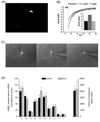Anabolic androgenic steroid abuse: multiple mechanisms of regulation of GABAergic synapses in neuroendocrine control regions of the rodent forebrain
- PMID: 21554430
- PMCID: PMC3168686
- DOI: 10.1111/j.1365-2826.2011.02151.x
Anabolic androgenic steroid abuse: multiple mechanisms of regulation of GABAergic synapses in neuroendocrine control regions of the rodent forebrain
Erratum in
- J Neuroendocrinol. 2012 May;24(5):849
Abstract
Anabolic androgenic steroids (AAS) are synthetic derivatives of testosterone originally developed for clinical purposes but are now predominantly taken at suprapharmacological levels as drugs of abuse. To date, almost 100 different AAS compounds that vary in metabolic fate and physiological effects have been designed and synthesised. Although they are administered for their ability to enhance muscle mass and performance, untoward side effects of AAS use include changes in reproductive and sexual behaviours. Specifically, AAS, depending on the type of compound administered, can delay or advance pubertal onset, lead to irregular oestrous cyclicity, diminish male and female sexual behaviours, and accelerate reproductive senescence. Numerous brains regions and neurotransmitter signalling systems are involved in the generation of these behaviours, and are potential targets for both chronic and acute actions of the AAS. However, critical to all of these behaviours is neurotransmission mediated by GABA(A) receptors within a nexus of interconnected forebrain regions that includes the medial preoptic area, the anteroventral periventricular nucleus and the arcuate nucleus of the hypothalamus. We review how exposure to AAS alters GABAergic transmission and neural activity within these forebrain regions, taking advantage of in vitro systems and both wild-type and genetically altered mouse strains, aiming to better understand how these synthetic steroids affect the neural systems that underlie the regulation of reproduction and the expression of sexual behaviours.
© 2011 The Authors. Journal of Neuroendocrinology © 2011 Blackwell Publishing Ltd.
Figures




Similar articles
-
Anabolic androgenic steroids and forebrain GABAergic transmission.Neuroscience. 2006;138(3):793-9. doi: 10.1016/j.neuroscience.2005.08.039. Epub 2005 Nov 28. Neuroscience. 2006. PMID: 16310317 Review.
-
Anabolic steroids induce region- and subunit-specific rapid modulation of GABA(A) receptor-mediated currents in the rat forebrain.J Neurophysiol. 2000 Jun;83(6):3299-309. doi: 10.1152/jn.2000.83.6.3299. J Neurophysiol. 2000. Retraction in: J Neurophysiol. 2007 Sep;98(3):1841. doi: 10.1152/jn.z9k-8459-Retraction.2007. PMID: 10848550 Retracted.
-
Anabolic androgenic steroids induce age-, sex-, and dose-dependent changes in GABA(A) receptor subunit mRNAs in the mouse forebrain.Neuropharmacology. 2002 Sep;43(4):634-45. doi: 10.1016/s0028-3908(02)00154-5. Neuropharmacology. 2002. PMID: 12367608
-
Effects of chronic exposure to an anabolic androgenic steroid cocktail on alpha5-receptor-mediated GABAergic transmission and neural signaling in the forebrain of female mice.Neuroscience. 2009 Jun 30;161(2):526-37. doi: 10.1016/j.neuroscience.2009.03.039. Epub 2009 Mar 24. Neuroscience. 2009. PMID: 19324077 Free PMC article.
-
Sex- and age-specific effects of anabolic androgenic steroids on reproductive behaviors and on GABAergic transmission in neuroendocrine control regions.Brain Res. 2006 Dec 18;1126(1):122-38. doi: 10.1016/j.brainres.2006.08.081. Epub 2006 Sep 29. Brain Res. 2006. PMID: 17010954 Review.
Cited by
-
Mad men, women and steroid cocktails: a review of the impact of sex and other factors on anabolic androgenic steroids effects on affective behaviors.Psychopharmacology (Berl). 2016 Feb;233(4):549-69. doi: 10.1007/s00213-015-4193-6. Epub 2016 Jan 12. Psychopharmacology (Berl). 2016. PMID: 26758282 Free PMC article. Review.
-
Neurotoxicity by synthetic androgen steroids: oxidative stress, apoptosis, and neuropathology: A review.Curr Neuropharmacol. 2015 Jan;13(1):132-45. doi: 10.2174/1570159X13666141210221434. Curr Neuropharmacol. 2015. PMID: 26074748 Free PMC article. Review.
-
The non-preventive effects of human menopausal gonadotropins on ovarian tissues in Nandrolone decanoate-treated female rats: A histochemical and ultra-structural study.Int J Reprod Biomed. 2018 Mar;16(3):159-174. Int J Reprod Biomed. 2018. PMID: 29766147 Free PMC article.
-
Corticotropin-releasing factor modulation of forebrain GABAergic transmission has a pivotal role in the expression of anabolic steroid-induced anxiety in the female mouse.Neuropsychopharmacology. 2012 May;37(6):1483-99. doi: 10.1038/npp.2011.334. Epub 2012 Feb 1. Neuropsychopharmacology. 2012. PMID: 22298120 Free PMC article.
-
An FT-Raman, FT-IR, and Quantum Chemical Investigation of Stanozolol and Oxandrolone.Biosensors (Basel). 2017 Dec 26;8(1):2. doi: 10.3390/bios8010002. Biosensors (Basel). 2017. PMID: 29278383 Free PMC article.
References
-
- Basaria S, Wahlstrom JT, Dobs AS. Clinical review 138: Anabolic-androgenic steroid therapy in the treatment of chronic diseases. J Clin Endocrinol Metab. 2001;86:5108–5117. - PubMed
-
- Shahidi NT. A review of the chemistry, biological action, and clinical applications of anabolic-androgenic steroids. Clin Ther. 2001;23:1355–1390. - PubMed
-
- Kochakian C, Yesalis CE. Anabolic-androgenic steroids: a historical perspective and definition. In: Yesalis CE, editor. Anabolic Steroids in Sport and Exercise. Champaign: Human Kinetics; 2000. pp. 4–33.
-
- Llewellyn W. Body of Science. 6th Edition. Jupiter, FL: 2007. Anabolics; pp. vii–ix.
-
- Trenton AJ, Currier GW. Behavioural manifestations of anabolic steroid use. CNS Drugs. 2005;19:571–595. - PubMed
Publication types
MeSH terms
Substances
Grants and funding
LinkOut - more resources
Full Text Sources
Medical

